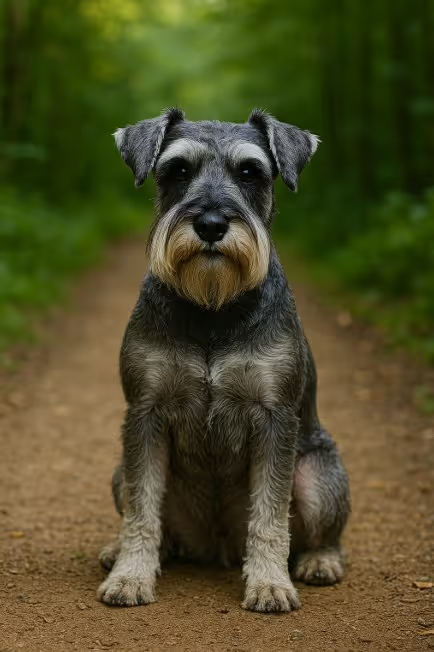The Miniature Schnauzer is a spirited, people-focused terrier-type companion—alert, clever, and comically expressive with those famous eyebrows and beard. Low-shedding and highly trainable, “Minis” fit well in condos and family homes that can offer daily exercise, enrichment, and consistent, positive training. If you’re wondering “Are Miniature Schnauzers hypoallergenic?”—they’re widely considered low-allergen/low-shedding, though no breed is 100% hypoallergenic. Curious “Do Miniature Schnauzers bark a lot?”—they’re vigilant watchdogs; training and enrichment help.

Developed in late-19th-century Germany by crossing the Standard Schnauzer with smaller breeds (likely Affenpinscher, Miniature Pinscher, and others), the Miniature Schnauzer became a compact ratter and farm watchdog. Its wiry coat, keen expression, and big personality made it a favourite companion throughout Europe and North America. Today the breed is a top choice for families and sport enthusiasts, excelling in obedience, rally, agility, scent work, and therapy roles.
A sturdy, square, small dog with a harsh, weather-resistant jacket and hallmark furnishings.
Low shedding doesn’t mean low maintenance—plan for regular coat care.
A zippy little athlete—short legs, big motor.
Smart, eager, and a tad opinionated—keep it upbeat and structured.
Feed thoughtfully to support skin/coat and reduce metabolic risks.
Generally robust, but some breed-linked issues warrant screening and management.
Seek transparency on health and grooming education—or consider rescue.
Are Miniature Schnauzers hypoallergenic?
Low-shedding and often suitable for allergy-sensitive homes, but no dog is 100% hypoallergenic—meet one first.
Do Miniature Schnauzers bark a lot?
They’re alert watchdogs. Teach a reliable “quiet” and provide daily exercise and enrichment.
Hand-stripping vs clipping—what’s best?
Hand-stripping preserves a harsh, weather-resistant coat and lowest shedding; clipping softens texture and may increase visible shed but is common for pets.
How much exercise does a Miniature Schnauzer need?
Plan for 45–60 minutes daily plus brain work (tricks, nose games).
Do Miniature Schnauzers shed?
Low shedding. Regular grooming (stripping or clipping) removes hair before it falls out.
Are Minis good apartment dogs?
Yes—compact and adaptable with exercise and bark training.
Are Miniature Schnauzers prone to pancreatitis?
They can be. Keep diets moderate in fat, avoid greasy table scraps, and ask your vet about fasting lipid checks.
How often should I groom a Miniature Schnauzer?
Brush 2×/week; hand-strip every 6–10 weeks or clip every 6–8 weeks; clean beard after meals; maintain nails/teeth/ears routinely.
Miniature vs Standard vs Giant Schnauzer—what’s different?
All share the look; Minis are small companion-ratters (Terrier Group), Standards are versatile workers, and Giants are guardian/working dogs with higher intensity and size.